Yannik Frisch
SurGrID: Controllable Surgical Simulation via Scene Graph to Image Diffusion
Feb 11, 2025Abstract:Surgical simulation offers a promising addition to conventional surgical training. However, available simulation tools lack photorealism and rely on hardcoded behaviour. Denoising Diffusion Models are a promising alternative for high-fidelity image synthesis, but existing state-of-the-art conditioning methods fall short in providing precise control or interactivity over the generated scenes. We introduce SurGrID, a Scene Graph to Image Diffusion Model, allowing for controllable surgical scene synthesis by leveraging Scene Graphs. These graphs encode a surgical scene's components' spatial and semantic information, which are then translated into an intermediate representation using our novel pre-training step that explicitly captures local and global information. Our proposed method improves the fidelity of generated images and their coherence with the graph input over the state-of-the-art. Further, we demonstrate the simulation's realism and controllability in a user assessment study involving clinical experts. Scene Graphs can be effectively used for precise and interactive conditioning of Denoising Diffusion Models for simulating surgical scenes, enabling high fidelity and interactive control over the generated content.
GAUDA: Generative Adaptive Uncertainty-guided Diffusion-based Augmentation for Surgical Segmentation
Jan 18, 2025



Abstract:Augmentation by generative modelling yields a promising alternative to the accumulation of surgical data, where ethical, organisational and regulatory aspects must be considered. Yet, the joint synthesis of (image, mask) pairs for segmentation, a major application in surgery, is rather unexplored. We propose to learn semantically comprehensive yet compact latent representations of the (image, mask) space, which we jointly model with a Latent Diffusion Model. We show that our approach can effectively synthesise unseen high-quality paired segmentation data of remarkable semantic coherence. Generative augmentation is typically applied pre-training by synthesising a fixed number of additional training samples to improve downstream task models. To enhance this approach, we further propose Generative Adaptive Uncertainty-guided Diffusion-based Augmentation (GAUDA), leveraging the epistemic uncertainty of a Bayesian downstream model for targeted online synthesis. We condition the generative model on classes with high estimated uncertainty during training to produce additional unseen samples for these classes. By adaptively utilising the generative model online, we can minimise the number of additional training samples and centre them around the currently most uncertain parts of the data distribution. GAUDA effectively improves downstream segmentation results over comparable methods by an average absolute IoU of 1.6% on CaDISv2 and 1.5% on CholecSeg8k, two prominent surgical datasets for semantic segmentation.
Deep Generative Models for 3D Medical Image Synthesis
Oct 23, 2024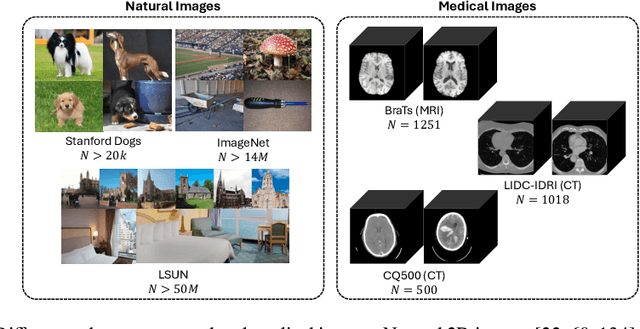
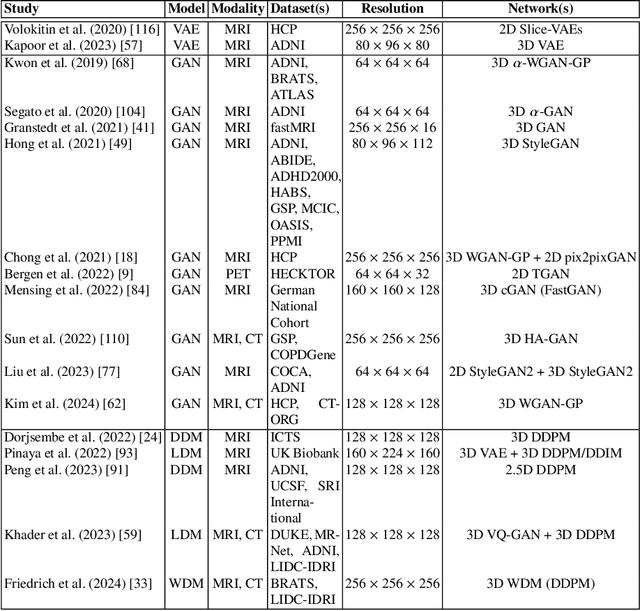
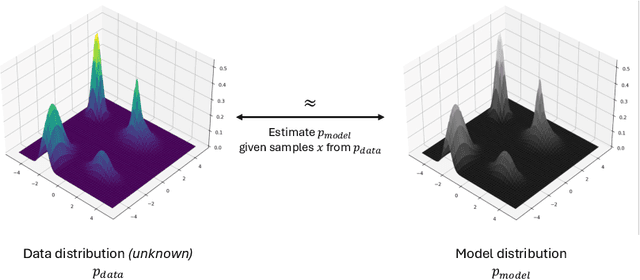
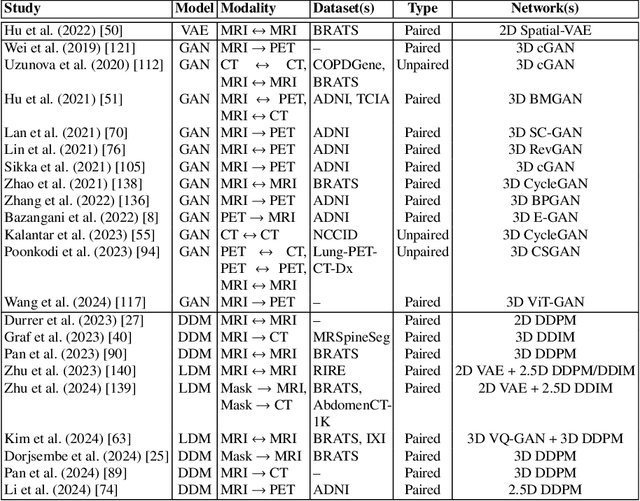
Abstract:Deep generative modeling has emerged as a powerful tool for synthesizing realistic medical images, driving advances in medical image analysis, disease diagnosis, and treatment planning. This chapter explores various deep generative models for 3D medical image synthesis, with a focus on Variational Autoencoders (VAEs), Generative Adversarial Networks (GANs), and Denoising Diffusion Models (DDMs). We discuss the fundamental principles, recent advances, as well as strengths and weaknesses of these models and examine their applications in clinically relevant problems, including unconditional and conditional generation tasks like image-to-image translation and image reconstruction. We additionally review commonly used evaluation metrics for assessing image fidelity, diversity, utility, and privacy and provide an overview of current challenges in the field.
Frequency-Time Diffusion with Neural Cellular Automata
Jan 11, 2024
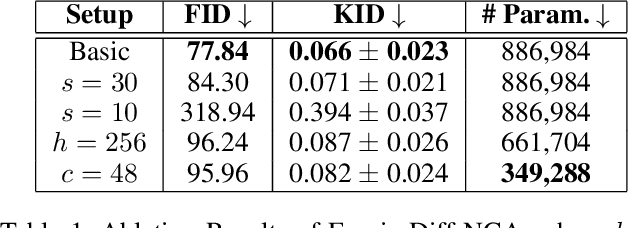
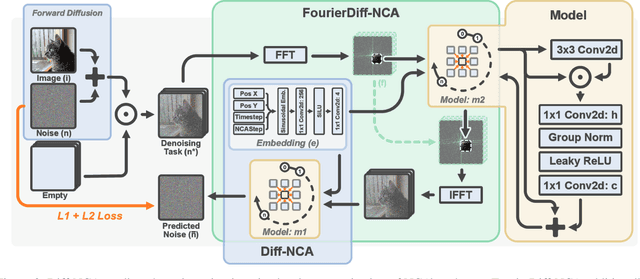
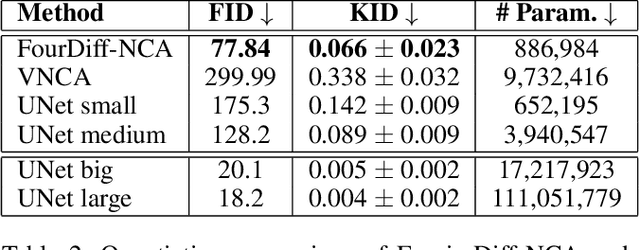
Abstract:Denoising Diffusion Models (DDMs) have become the leading generative technique for synthesizing high-quality images but are often constrained by their UNet-based architectures that impose certain limitations. In particular, the considerable size of often hundreds of millions of parameters makes them impractical when hardware resources are limited. However, even with powerful hardware, processing images in the gigapixel range is difficult. This is especially true in fields such as microscopy or satellite imaging, where such challenges arise from the limitation to a predefined generative size and the inefficient scaling to larger images. We present two variations of Neural Cellular Automata (NCA)-based DDM methods to address these challenges and jumpstart NCA-based DDMs: Diff-NCA and FourierDiff-NCA. Diff-NCA performs diffusion by using only local features of the underlying distribution, making it suitable for applications where local features are critical. To communicate global knowledge in image space, naive NCA setups require timesteps that increase with the image scale. We solve this bottleneck of current NCA architectures by introducing FourierDiff-NCA, which advances Diff-NCA by adding a Fourier-based diffusion process and combines the frequency-organized Fourier space with the image space. By initiating diffusion in the Fourier domain and finalizing it in the image space, FourierDiff-NCA accelerates global communication. We validate our techniques by using Diff-NCA (208k parameters) to generate high-resolution digital pathology scans at 576x576 resolution and FourierDiff-NCA (887k parameters) to synthesize CelebA images at 64x64, outperforming VNCA and five times bigger UNet-based DDMs. In addition, we demonstrate FourierDiff-NCA's capabilities in super-resolution, OOD image synthesis, and inpainting without additional training.
Synthesising Rare Cataract Surgery Samples with Guided Diffusion Models
Aug 03, 2023

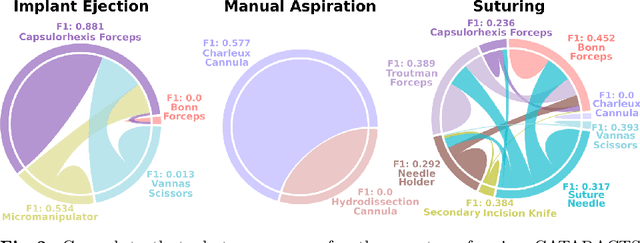

Abstract:Cataract surgery is a frequently performed procedure that demands automation and advanced assistance systems. However, gathering and annotating data for training such systems is resource intensive. The publicly available data also comprises severe imbalances inherent to the surgical process. Motivated by this, we analyse cataract surgery video data for the worst-performing phases of a pre-trained downstream tool classifier. The analysis demonstrates that imbalances deteriorate the classifier's performance on underrepresented cases. To address this challenge, we utilise a conditional generative model based on Denoising Diffusion Implicit Models (DDIM) and Classifier-Free Guidance (CFG). Our model can synthesise diverse, high-quality examples based on complex multi-class multi-label conditions, such as surgical phases and combinations of surgical tools. We affirm that the synthesised samples display tools that the classifier recognises. These samples are hard to differentiate from real images, even for clinical experts with more than five years of experience. Further, our synthetically extended data can improve the data sparsity problem for the downstream task of tool classification. The evaluations demonstrate that the model can generate valuable unseen examples, allowing the tool classifier to improve by up to 10% for rare cases. Overall, our approach can facilitate the development of automated assistance systems for cataract surgery by providing a reliable source of realistic synthetic data, which we make available for everyone.
 Add to Chrome
Add to Chrome Add to Firefox
Add to Firefox Add to Edge
Add to Edge